Do you want to improve your skills in After Effects and create impressive transitions as well as special effects? With the techniques of Alpha and Luma Keying as well as manual keying, you can achieve exactly that. In this guide, you’ll find a step-by-step explanation of how to work with footage and create creative transitions. Let’s get started.
Key Insights
- Manual keying allows you to precisely select and cut out specific parts of an image.
- Alpha and Luma masks are crucial for creating transitions and effects.
- The use of 3D layers can significantly enhance the visual depth of your animations.
Step-by-Step Guide
Create Composition and Import Image
Start by dragging an image into your composition. You can use any image, but choose one that is well-suited for these techniques. Just drag the image into the composition and make sure the composition size is adopted automatically. To change the size, you can right-click on the composition and select “Composition Settings”. Here, you can adjust the necessary settings as needed.
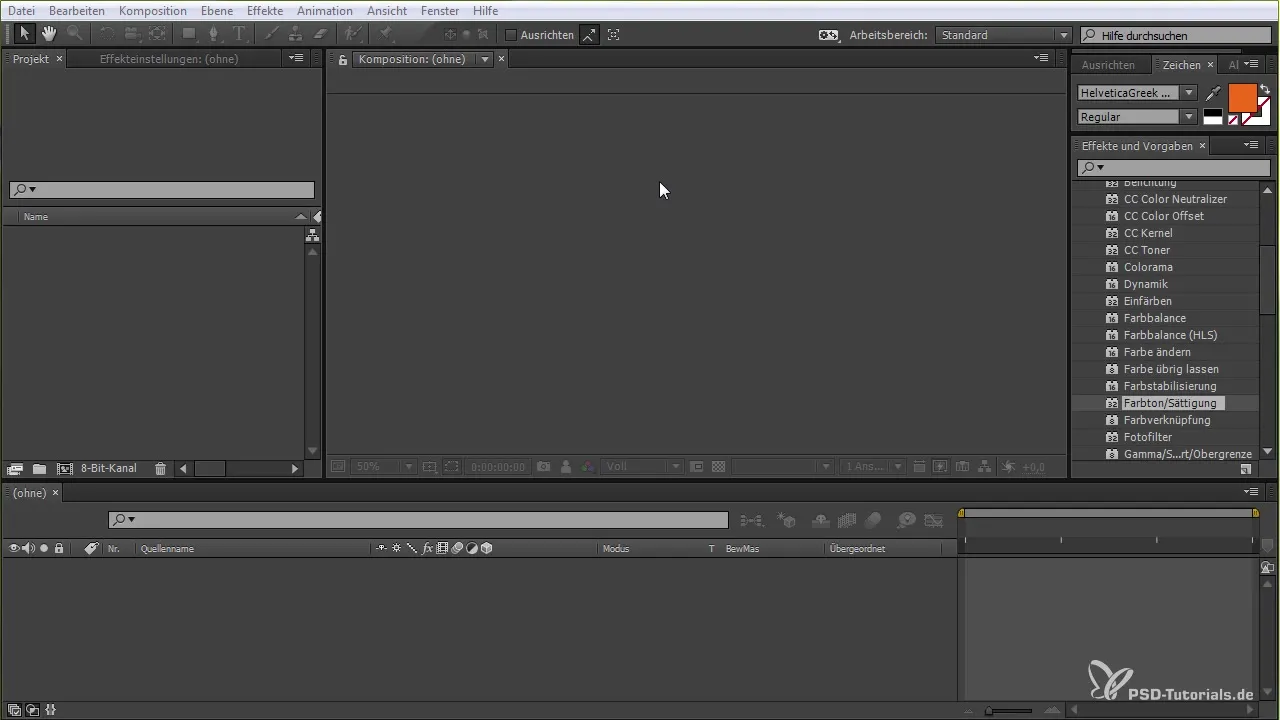
Duplicate and Color Layer
To create an interesting effect, duplicate the same layer by using Ctrl (Windows) or Command (Mac) with C and V. Drag the duplicated layer down in your effects control panel and apply the "Hue/Saturation" effect from the color corrections. Change the colors, for example to a vibrant green, to create contrast.
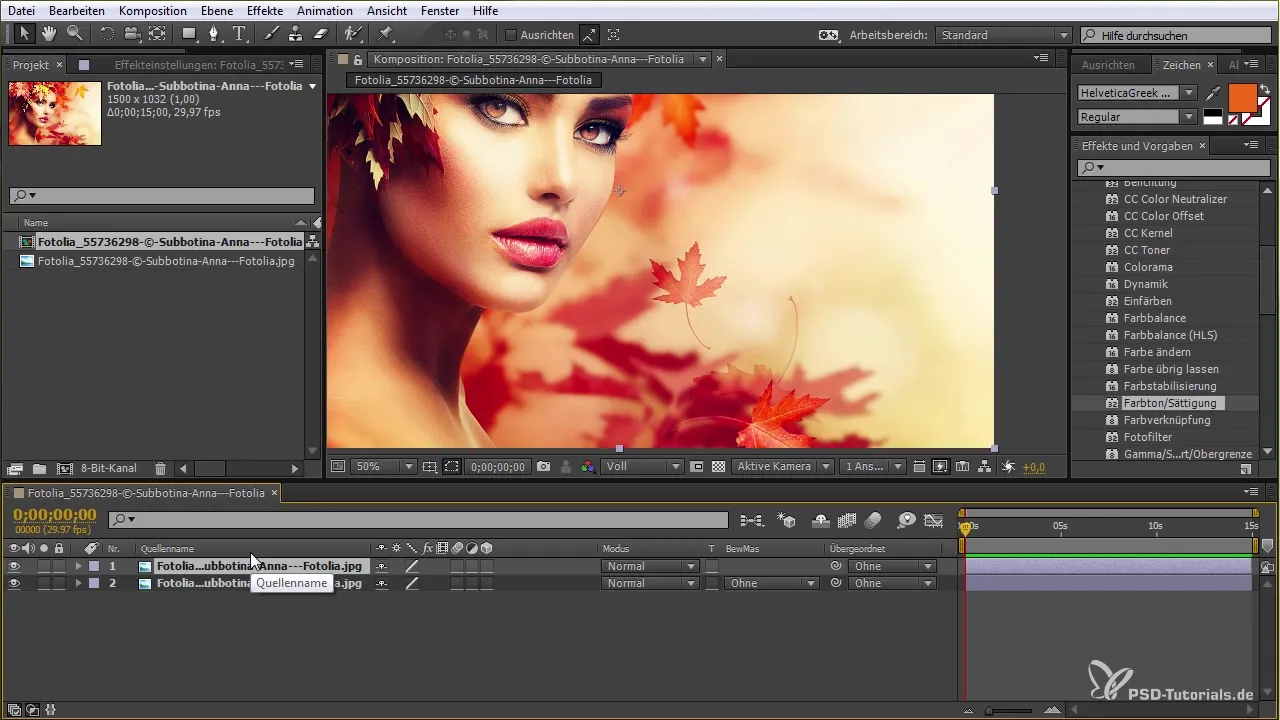
Activate 3D Layers and Adjust Position
Activate the 3D option for both layers to experiment with spatial positioning. Pull the top layer a bit forward and the bottom layer a bit backward. It’s important not to lose sight of the visual effect, but rather to understand the spatial distance you want to create.
Use Mask Tool
Select the Pen tool and start drawing a mask on the desired object, such as a leaf. Don’t be too perfectionistic in your approach; it’s about capturing the basic shape. Hold the Alt key to move the anchor points and shape the mask as desired. Make sure your subject remains visible while creating the mask.
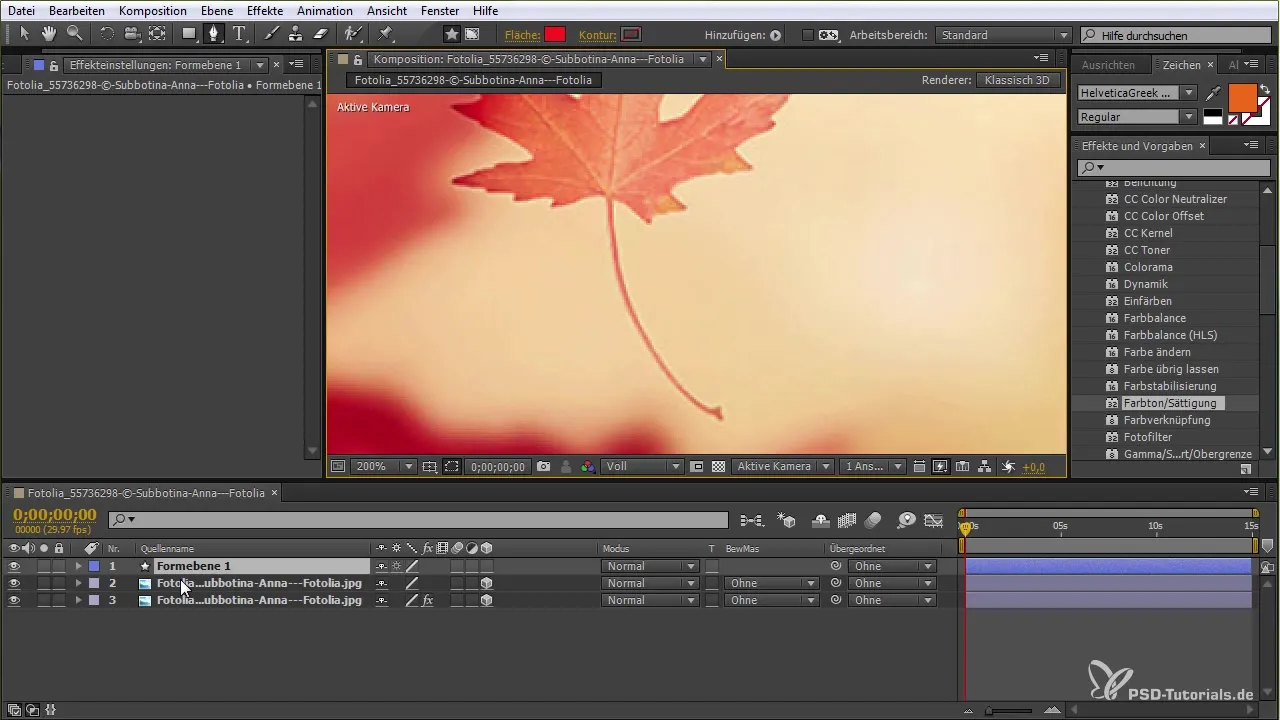
Adjust and Subtract Mask
Once you’ve created the mask, you can refine it further. Select the mask and use the Subtract tool. Now you’ve cut out the leaf and can animate it to fly through space, without the original shape remaining visible.
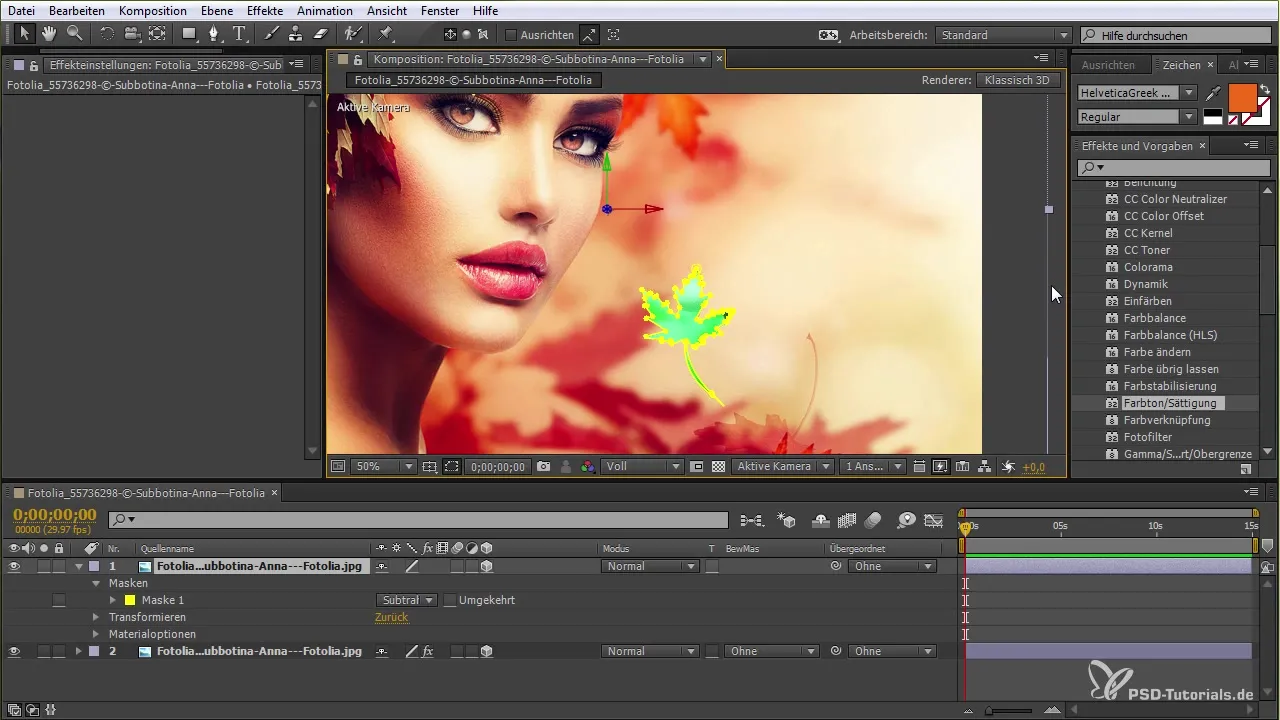
Add Camera Control
Now it’s about giving the composition movement. Add a camera by right-clicking on the composition and selecting “Camera” under "New". You can move the camera to create interesting perspectives. Set the camera’s point of interest to ensure it can capture both the front and back layers.
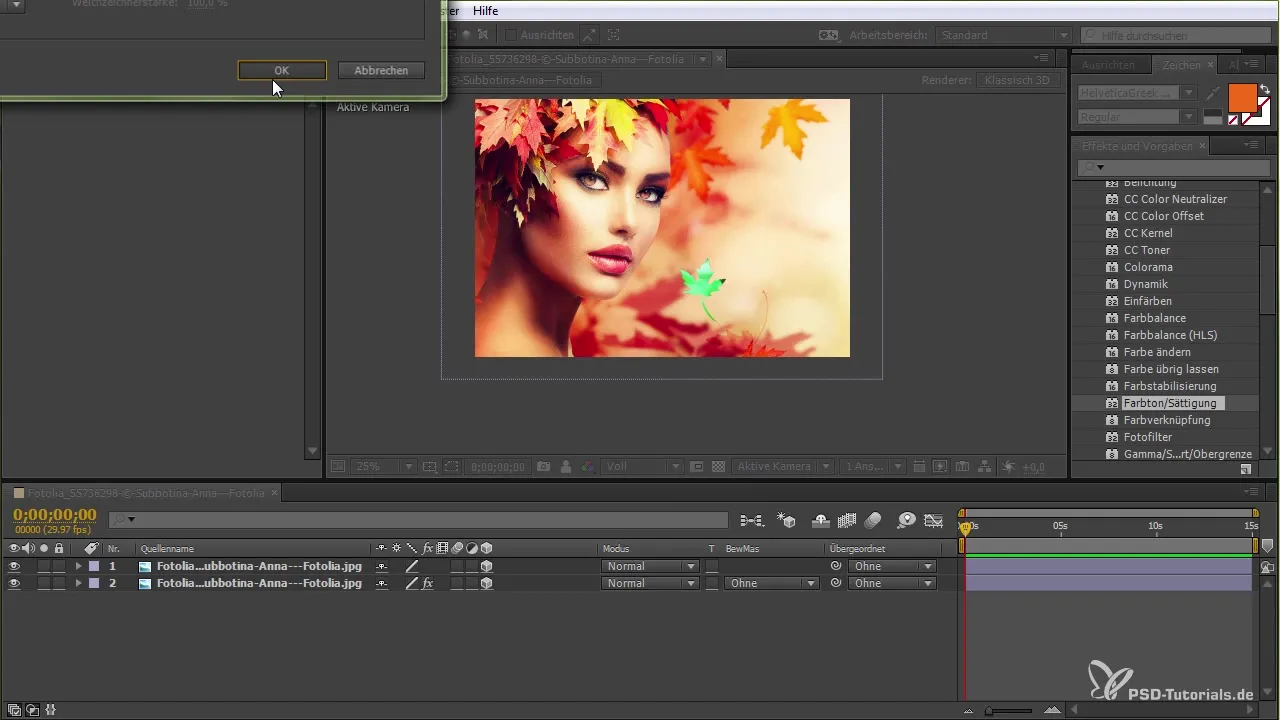
Fleshy Animation through Leaves
To expand the animation, you can duplicate the leaf multiple times and add additional effects. Experiment with their rotations and positions to create a dynamic impression. Use position and rotation sensibly to enhance the feeling of depth.
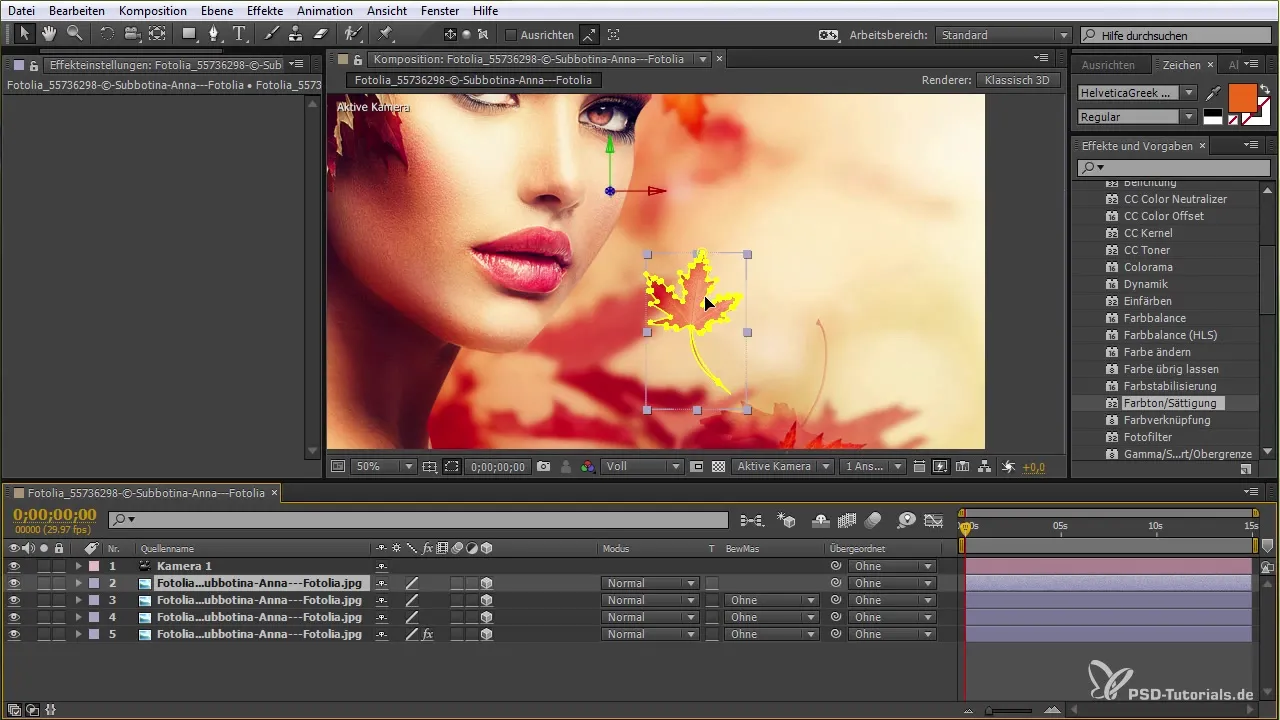
Overlay with Alpha and Luma Masking
To make these leaves appear realistic, you can work with Alpha and Luma masks. By using an inverse mask, the leaves become visible while the image flows in the background. This creates a seamless visual transition and intensifies the effect of your animation.
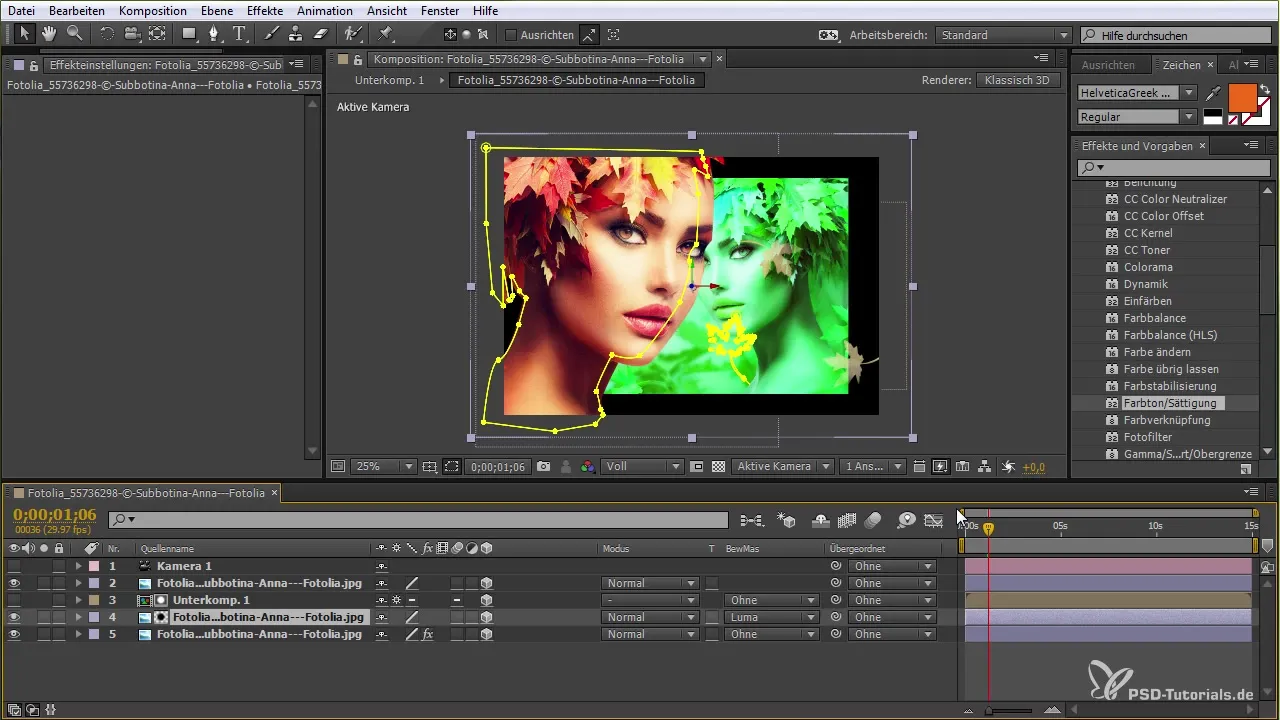
Refinement and Adjustments
In the final phase, a lot of fine-tuning is necessary. Adjust the camera angles and positions of the objects to ensure everything transitions seamlessly. Use the preview function in After Effects to review all animations in real-time.
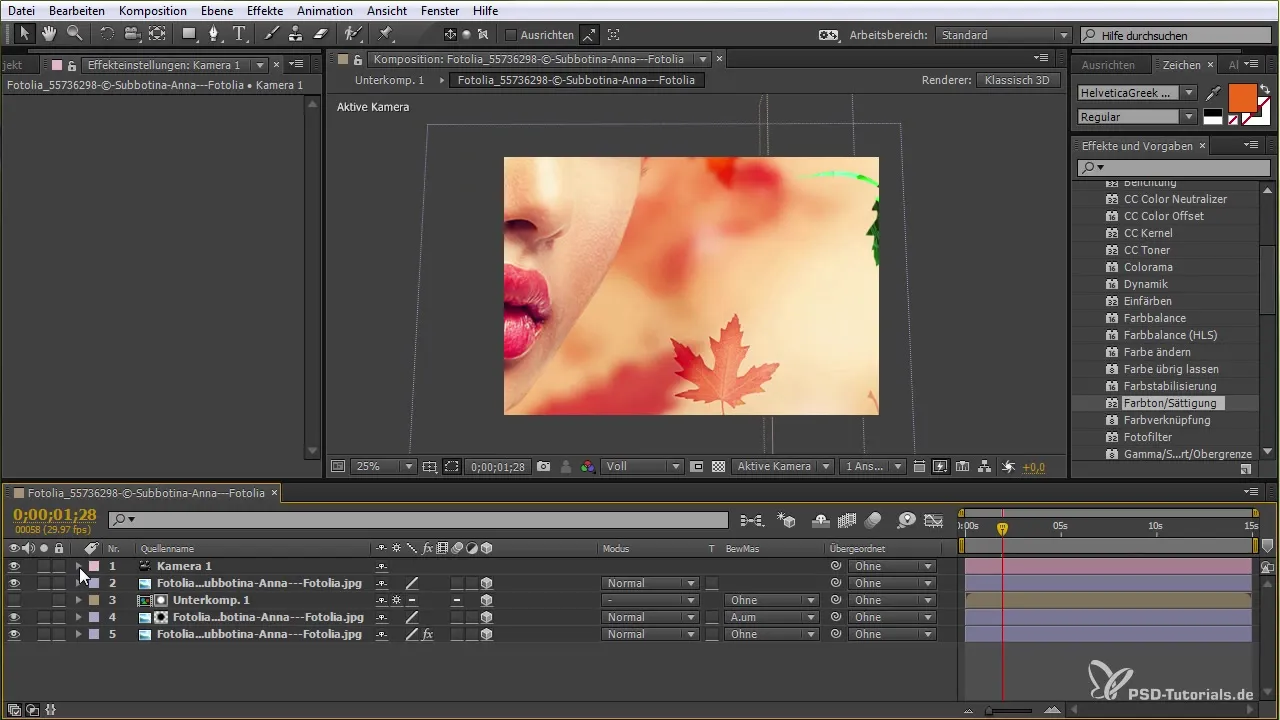
Summary – After Cutting Effects with Alpha and Luma Keying in After Effects
The use of Alpha and Luma Keying as well as manual keying in After Effects allows you to creatively play with images and produce impressive animations. With the described steps, you are capable of achieving unique effects and taking your video projects to the next level.
Frequently Asked Questions
How do I create a mask in After Effects?You can create a mask with the Pen tool by simply clicking on the desired points.
What is the difference between Alpha and Luma masks?Alpha masks use the opacity of layers, while Luma masks are based on brightness.
How can I control the camera in my composition?Add a camera and use the transformation options to adjust its position and orientation.
How can I enhance the effect of an image?By using color corrections, audio waves, and 3D layers, you can improve the visual results.
Can I use multiple masks on a layer?Yes, you can create multiple masks to control different areas of a layer independently.


